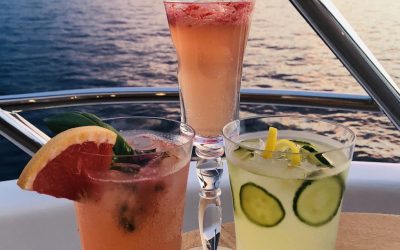Anyone else open a bottle of wine after reading PART ONE of the wine training series?! Well, you may as well just open another now… I know I am! Today’s topic is all about presenting wine to guests & the correct way to decant wines – both old & new.
P.S. If you are stuck on what to get a friend or family member for their birthday etc. Ben & I bought his dad a wine decanter for Christmas last year & he loves it! It is the perfect way to elevate wine service in your own home without having to buy a crazy expensive bottle of wine.
Thank you again to Kim for putting all of this together xo
Wine Service
When a guest has ordered a wine, always present it back to them. It’s usually best to hold the bottle on the bottom, or the “punt” with your fingers and then have it resting in your palm to show them the label. Once they have approved, open and then pour a small amount in their glass for tasting.
It is standard practice that the person ordering the wine is given the first taste of the wine unless they appoint someone else at the table or even ask you to do it.
After it has been tasted and they again give the approval, move around the table and serve other guests, before returning to fill the original tasting glass. Be mindful of pouring too much into glasses, wine should be poured as smaller portions and refilled as necessary rather than a bucket-full into each glass like you would do at a Moorea beach day with the crew. This just ensures that the wine is staying at the correct temperature whilst being consumed and also isn’t allowing overexposure from aeration.

Decanting of Wine
This is always a fun topic to discuss with sommeliers as everyone has their own opinion. To start with, it’s great to understand why we actually do decant wines.
Sediment
For Aged Reds, it is about removing the sediment, you know the grainy stuff at the bottom and doesn’t exactly look ascetically pleasing. It’s completely harmless and is what we call the “lees”. It’s basically just what settles back out of the wine after a period of laying down. If you know what wines are being served for lunch or dinner, best to remove the bottle from the wine fridge and leave standing upright for 24hours or as long as you can. This helps the sediment to move to the bottom of the bottle, rather than on the side when it’s been laying down. When decanting, you are simply pouring the wine off the top of the sediment. Once you start to see it entering the decanter, stop pouring and discard the remaining wine.
Aerate
Another reason is we decant is to aerate the wine. And this is where the subjective nature of wine comes in to play again. Some will say decant everything and anything and let the wine breathe as long as you can. I personally don’t find this to be the case.
With young wines, decanting is a good thing as the wines may be very closed so the aeration can help bring out their best characteristics and personality to the nose and to the palate. They are also that little bit more robust and can handle being thrown in a decanter and swirled around. Usually with a young wine, a double decant will more than sort them out.
FAQ: What is a double decant?
Now a double decant is when you pour into a decanter, rinse the bottle of sediment and pour straight back into the bottle. This is also a great idea if you have many wines at the table, instead of remembering which decanter is which, they are simply in their rightful bottle and ready to go. It’s also very quick, the wine gets sufficient aeration and a swirl in the glass will finish the process off.

Old Wines
Old wines are not the same, and by old I mean a general rule of being over 15 – 20 years of age. These wines will be a lot more delicate and too much air can be a bad and damaging thing. If you’re going to decant, it’s best to do right before serving, no longer than an hour, otherwise, they face that overexposure and possible loss of characters. For really really old wines, I usually suggest not decanting at all and simply pouring into the glass and letting it breathe from there. But every wine is different and will react differently so unfortunately, I don’t see there is a hard and fast rule.
If you are concerned about a particular wine, the simple answer is to google the tasting notes or even trying to contact the wines producer. They may actually be able to give you the decanting guide or direct advice as to how best to handle the wine.
Have multiple decanters onboard and not sure which one to use?
 Image from: Winefolly.com
Image from: Winefolly.com
Shop my decanting MUST-HAVES below!
I hope this has been helpful! Click here for Part Three ~ Cork Taint

xoxo
- FLIBS 2024 Recap - November 28, 2024
- How to build a yachtie CV! - April 3, 2019
- After Eight Martini - February 22, 2019







